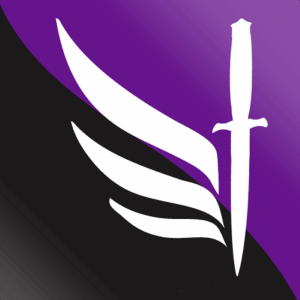The End of the Triumvirate sees 3 players’ games are few and far between.
This one is based on Ancient Rome, which isn’t a rare theme.
Players take on the role of one of three leaders in ancient Rome: Caesar, Pompeius, or Crassus. Each is seeking to dominate the others by various means. You could try a military victory by creating a massive land block… or perhaps a political victory by being elected as Consul twice… or perhaps you can win by sheer skill by raising your talents… Either way, a maximum of three players can participate in this sophomore release by Lookout games.
So in The End of the Triumvirate, as the blurb says, each player takes on the role of Ceasar, Pompeius or Crassus.
I had Crassus playing with Black Pieces.

The board is fairly abstract looking for cubes and cylinders representing Legions and region markers.
After set-up, the board looks like this, I start in Syria on the far end of the board. The player character is represented by that large, flat wooden piece.

Before looking at gameplay it’s worth just reviewing the win conditions as there are a couple…
Military – Control 9 different regions
Political – Win an Election and get 6 citizens in your Forum
Competence – Reach VII on both competence tracks
So now to gameplay in The End of the Triumvirate, which is actually straightforward…
Supply Phase
Each region will provide either 2 Gold, 2 Legionnaires or 1 of each. If your region marker covers this spot slide it off, it doesn’t slide it on. Then each uncovered region you own will produce into that space it’s Gold and Legionnaire combination.
You have one Governor in one of your regions which doesn’t slide on and off, it stays off so that region will produce each turn.
Move Phase
You then move your character through regions picking up the Gold into your supply or Legionnaires. You have 4 movement points, movement across Sea is free unless you’re carrying Legionnaires.
The fun comes when you move into another player’s territory and combat can begin.
It’s straightforward, you compare the number of Legionnaires you carried into that territory to your opponents, and most wins. Then the defenders lose all those Legionnaires and the attacker loses a number of Legionnaires equal to the number of defenders. (so 5 vs 3 will leave the attacker with 2 in that region)
However, there is a bag of ‘weapons’ which starts with 2 cubes of each player’s colour. The attacker draws a number of those cubes equal to the number of defending Legionnaires (max 3) and if a cube of a player who is involved in combat is pulled they kill off one Legionnaire of the opposing side before combat starts, adding a nice bit of randomness to the battles
If you lose a Battle you get to put a Weapon in the bag as a consultation. Lose two battles in a row and you get to gain competence.
So losing isn’t the end of the world.
However, if you lose a region your character is in, you are made to ‘Escape’ out and you lose competence on each track you are leading.
You then switch the Winners Region marker for the losers if you take it over. Remember this is how you win a Military victory.

Action Phase
This is where you use your Gold to take actions but it depends on what colour Region your character ends up on.
You can take 3 actions, the first costs 1 Gold, the second 2 Gold and the third 3 Gold.
The Yellow Regions are Political so you can pay to move up your Political Competence (part of winning the Competence victory) or align a Citizen (Political Victory)
The Brown regions are Military so you can pay to move up your Military Competence (the other part of winning the Competence victory) or produce 2 weapons, which is the cubes pulled out the bag in Combat.
The Red regions let you raise any Competence.
To do some of these actions it will cost you an extra 2 gold per action if you are not leading that particular competence track. (Leading is 1st or joint 1st on the track but you must be ahead of at least one person)
Move Calendar Stone
You then advance the calendar track.
At the end of the year, there is an Election with the player with the most Citizens in their section being declared a winner, after making a speech of course.
The winner gets a Consulate card, gets a second one of these and you also win (So the game ends after 4 years) Also, if you have a Consulate card and you get 6 Citizens in your section, you get a Political victory.
So that’s pretty much it, the player to hit one of the end-game goals first wins.
The End of the Triumvirate Summary
I liked this, I don’t like war games as I am terrible at them but there was enough there to do while my forces were being destroyed around the world.
Actually, I was 1 turn-off winning a Competence victory when Pompeius pulled out a Political victory the turn before me.
I enjoyed The End of the Triumvirate, again, different to any type of game I would normally play. It’s simple in rules yet complex in play without it melting your brain.
Jesta ThaRogue



Leave a Reply